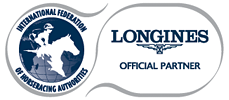All-Time Attendance Record Achieved
Bloodstock Sales Grow by 28.7%
Unprecedented Year of Success for Irish Trained Horses
Attendances at Irish Racecourses reached an all-time record of 1.43 million in 2005, it was announced today with the release of the 2005 racing statistics by Horse Racing Ireland (HRI). The Festival meetings at Punchestown, the Curragh, Galway, Listowel and Leopardstown were the star performers, with a buoyant second half of the year contributing most of the growth of almost 44,000 racegoers on the 2004 figures. The total number of fixtures (including Northern Ireland) was 313 compared to 305 last year. In the Republic of Ireland there were 291 fixtures against 281 in 2004. Despite the increased fixtures the average attendance per meeting remained strong at 4,914.
Total on-course betting was up 1.6% to €236.7 million. The Tote grew by 3.8% to €49.3 million which includes a continuing trend in betting into overseas Tote pools. Bookmaker betting on-course, which was down €6.6 million at the half-year stage, also gained from the buoyancy in the second half of the year showing growth of €1.6 million by year’s end.
Prize money was broadly the same as 2004 at €52.3 million. Owners’ contributions to the prize fund were reduced to 26% of the total, very close to HRI’s Strategic Plan objective of 25%. Race sponsorship retained its positive growth pattern of recent years and in 2005 almost two thirds of all races were sponsored, with overall sponsorship increasing by 4% to €7.9 million. Within that figure, commercial sponsorship grew by 4.4% to €5.6 million and European Breeders Fund contributions by 13.4% to €1.9m.
New owners’ registrations declined slightly to 969 from the record of 1,000 registrations in 2004, whilst the total value of bloodstock sales at public auction grew by 28.7% to €145.6 million, helped considerably by the transformation of the Goffs Orby yearling sale.
Commenting on the figures, HRI Chief Executive Brian Kavanagh said:
“2005 was probably the most successful year ever for Irish racing. Irish trained horses won over €11 million in prize money overseas. Nine winners at Cheltenham and eight at Aintree surpassed our most optimistic expectations. When we include the King George VI Chase at Sandown, in 2005, for the first time, Irish trained horses won each of the top five UK national hunt races. On the flat, three of the five English Classics, the Eclipse and Nassau Stakes, the King George VI and Queen Elizabeth Diamond Stakes, the Arlington Million and both of France’s principal races for two year olds were won by Irish trained horses. We also witnessed many great individual achievements, among them history-making performances by Frances Crowley – the first licensed woman to win an Irish Classic, and Nina Carberry, the first Irish woman to win against the professionals at the Cheltenham Festival.
The increase in the value of horse sales at public auction from €113 million to almost €146 million is very encouraging and a real indicator of the strong demand for bloodstock. As the Indecon report found, the racing and bloodstock industry is a major contributor to the economy generating employment in excess of 16,500 persons. The breeding sector alone contributes €330 million to the economy and accounts for over 10% of all livestock output.
The record attendance figure is particularly satisfying as this is a key sign of the health of racing as a sport. It was achieved despite a difficult start to the year when January/February attendances fell victim to extreme weather. The main Festivals continue to go from strength to strength with Punchestown, Galway, Listowel and Leopardstown all showing significant growth. Other notable performances were Ballinrobe, Bellewstown, Clonmel and Tramore. With the availability of live TV pictures, and the variety of options now on offer in a fiercely competitive betting market, racecourses are responding well to the challenge provided by the changing marketplace.
Racing is now attracting a new kind of racegoer, particularly to its Festival and summer evening meetings. Young socialisers, including more women than before, are trying racing for the first time. The task now is to retain their loyalty and make them informed and committed racegoers who will enjoy the racing experience for many years to come. Central to this task is the provision of first class facilities which bear comparison with competing leisure activities, and in this regard one of the most significant announcements of the year was the decision to approve the construction of Ireland’s first all-weather track at Dundalk, which is scheduled to come on stream in Spring of 2007.”
Looking forward to 2006, Brian Kavanagh stated:
“The underlying fundamentals of the industry are strong and 2006 will see much progress on improving racecourse facilities. Developments at Navan, Killarney, Dundalk and Galway are approved and underway, whilst plans for the flagship projects at the Curragh and Leopardstown will be presented to the HRI Board at an early stage. The integration of Fairyhouse into the HRI Racecourse division will also be a priority for 2006. We have seen in the past the positive effect of improved racecourse facilities, and these major projects will see our racecourses well positioned for future growth.
Prize money will increase from €52.3 million to €56 million in 2006 with the policy of encouraging better horses in training continuing. The level of balloting rose further in 2005 and whilst undoubtedly it is a source of much frustration, it will not be possible to meet the needs of every horse within the current fixture list. The priority will be to continue to ensure that horses are given a fair chance to show their ability and to work their way through the system.
2005 was also a year of dramatic change for the taxation structures of the industry with the formal announcement of the end of the stallion taxation exemption and the reduction of betting duty from 2% to 1% (to be absorbed by the betting industry). The security of funding provided by the Horse and Greyhound Racing Fund in recent years has allowed the industry engage in long-term strategic planning and in this regard Horse Racing Ireland welcomes the undertaking by the Minister for Finance in the Budget to examine the potential for widening the tax base on which this 1% will apply.”
Key Figures:



